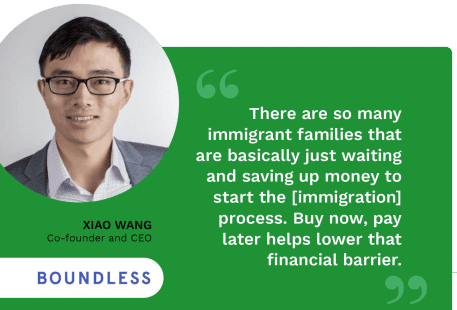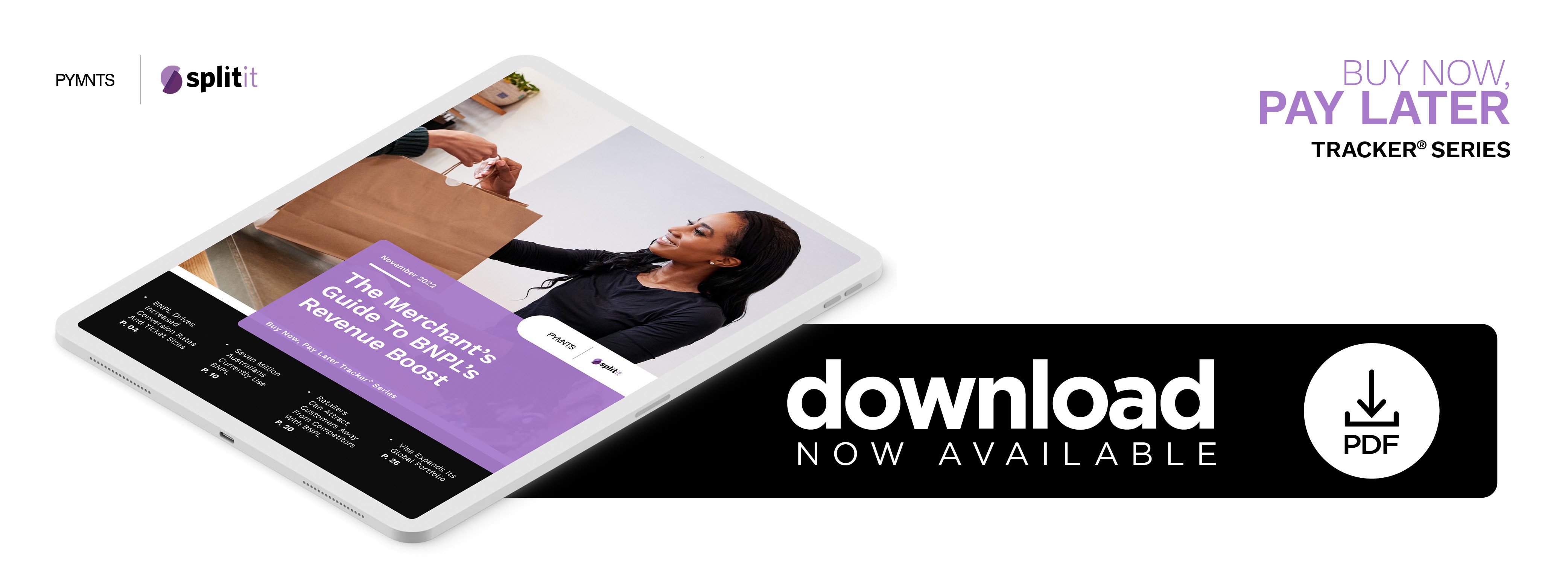Learn How Boundless Drives Financial Inclusion With BNPL

The findings from this month’s “Buy Now, Pay Later Tracker®” also show that over half of consumers are either more likely to choose retailers that offer it or switch to ones that do, in what Boundless CEO Xiao Wang tells PYMNTS is proof that BNPL benefits businesses just as much as it benefits their customers.
An interview with Xiao Wang, co-founder and CEO of immigration services startup and Splitit partner Boundless, about how BNPL helps the companies that implement it.
—
There are few groups that face more challenges in the U.S. than recent immigrants and those who wish to immigrate, especially when it comes to affording necessary services to support their efforts. Not only are these people more likely to be poorer than the average natural-born citizen, but they must also contend with the added expenses of navigating the complex immigration system for themselves or their family members.

“There are a lot of barriers that keep someone from starting to live their life in the U.S., and a big part of that is being able to save up enough money to even get started on this process. Buy now, pay later allows us to lower that barrier for families.”
Offering buy now, pay later (BNPL) can benefit the business that implements it just as much as it benefits their customers. Customers are much more likely to complete purchases and in much higher quantities when they can divide the cost over multiple smaller payments, which drives up the company’s revenue.
“[BNPL] both increases conversion rates [from] people who are going to purchase now instead of waiting, and it also increases customer satisfaction because we’re able to offer a benefit that customers can’t achieve anywhere else.”
BNPL could potentially drive further revenue in the future as it enables more customers to make purchases they otherwise could not make. Removing institutional barriers to lending for underserved populations like immigrants makes good business sense — and not just for those that serve immigrants directly. Improving financial inclusion can drive revenue across the board.
“The U.S. financial system is inherently flawed against a number of different types of populations of which immigrants are one of them. But buy now, pay later providers have enabled customers that are limited by traditional agency credit scores. What I’m really hopeful for is the proliferation of new ways to better understand the credit worthiness of a broader swath of the population, especially ones that have been disadvantaged previously.”
